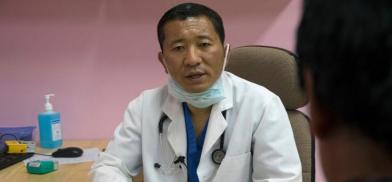Bhutan takes steps to prevent community spread
In their bid to ensure that there is no risk of community infection, the Bhutanese government has announced a slew of steps, which includes closure of all businesses by 7 pm

Thimphu: In their bid to ensure that there is no risk of community infection, the Bhutanese government has announced a slew of steps, which includes closure of all businesses by 7 pm. The government has also notified that gathering in groups of more than three people would be discouraged and officials on duty would monitor gatherings and ask people to discontinue activities.
The regulation comes into effect as a precautionary measure to prevent a possible risk of community infection with the increasing number of people completing the 21-day mandatory quarantine period.
Prime Minister Dr. Lotay Tshering said that with hundreds of people coming out of quarantine, many are seen out in the towns in Thimphu, Paro and Phuentsholing.
While all those completing the 21-day mandatory quarantine period are certified of having tested negative to the virus, Lyonchhen said there is a small window where negative could be ‘false negative’.
“This is the same with all other tests. As of now, in all medical science history, there is no test that is 100 percent specific,” Lyonchhen, a trained medical professional, said, adding that the COVID-19 test is the same. However, he said it is a highly sensitive test, meaning that if a person tests positive, it is almost certain that he or she is positive.
While surveillance has been stepped up, Lyonchhen said that should there be a positive case over the next few days, it could be said that those negative test results from quarantine centres were ‘false negative’.
Irrespective of symptoms, all those completing quarantines are tested on the 22nd day. Their blood samples are tested using a rapid test kit.
The Prime Minister also said that a rapid test kit process is an indirect indication and not necessarily a direct approach to see the presence of the virus.
The mechanism works based on the body’s reaction against the virus. “The test is to check for antibodies in a person. If there are antibodies, then the test shows positive but it doesn’t mean that the person has an active infection.”
Lyonchhen, who has worked in the past as a urologist in some Bhutanese hospitals, said that when a person is infected, the body immediately produces antibodies against the virus. The rapid test is used to detect these antibodies.
However, the test also detects antibodies from past infections (with the coronavirus-like virus). As a confirmatory test, a polymerase chain reaction (PCR) test is then conducted. This is the reason why some people testing positive on the rapid test, later test negative on the PCR test.
Lyonchhen said that a PCR test identifies the genetic material (gene) of the virus, meaning it inspects the virus itself in a sample.
He explained that incidences where a COVID-19 positive person who had earlier tested negative, testing positive in the second test is not due to the machine’s error.
For a PCR test, the sample used is a throat swab. Sometimes when the sample collected does not contain the virus or have a low virus-load, the PCR results would be negative.
However, Lyonchhen said that this doesn’t mean the machine is wrong. “The machine is correct because it is saying the sample used do not have the virus. It is not saying the patient doesn’t have the virus.”
He said that the result of the test depends on the viral load of the sample used, adding that an ICU patient who is severely ill would test positive since the sample collected is from the lungs, the main pool of virus.
Like in a pregnancy test kit, Lyonchhen said that a woman could test positive even if she is not because of certain chemical components in the sample. “That is why even after three weeks of quarantine, there could be positive cases. And sometimes people without symptoms who test negative on the rapid test kit could go out with the virus and infect those who are susceptible.”
Meanwhile, after testing negative for the second time in 24 hours, the third Bhutanese patient was moved from the isolation ward at the national referral hospital to the quarantine facility yesterday.
With this, all three Bhutanese who earlier tested positive for COVID-19 are now moved to de-isolation. After completing 14 days of de-isolation and upon testing negative at the end of the period, he or she would be declared recovered.









Post a Comment